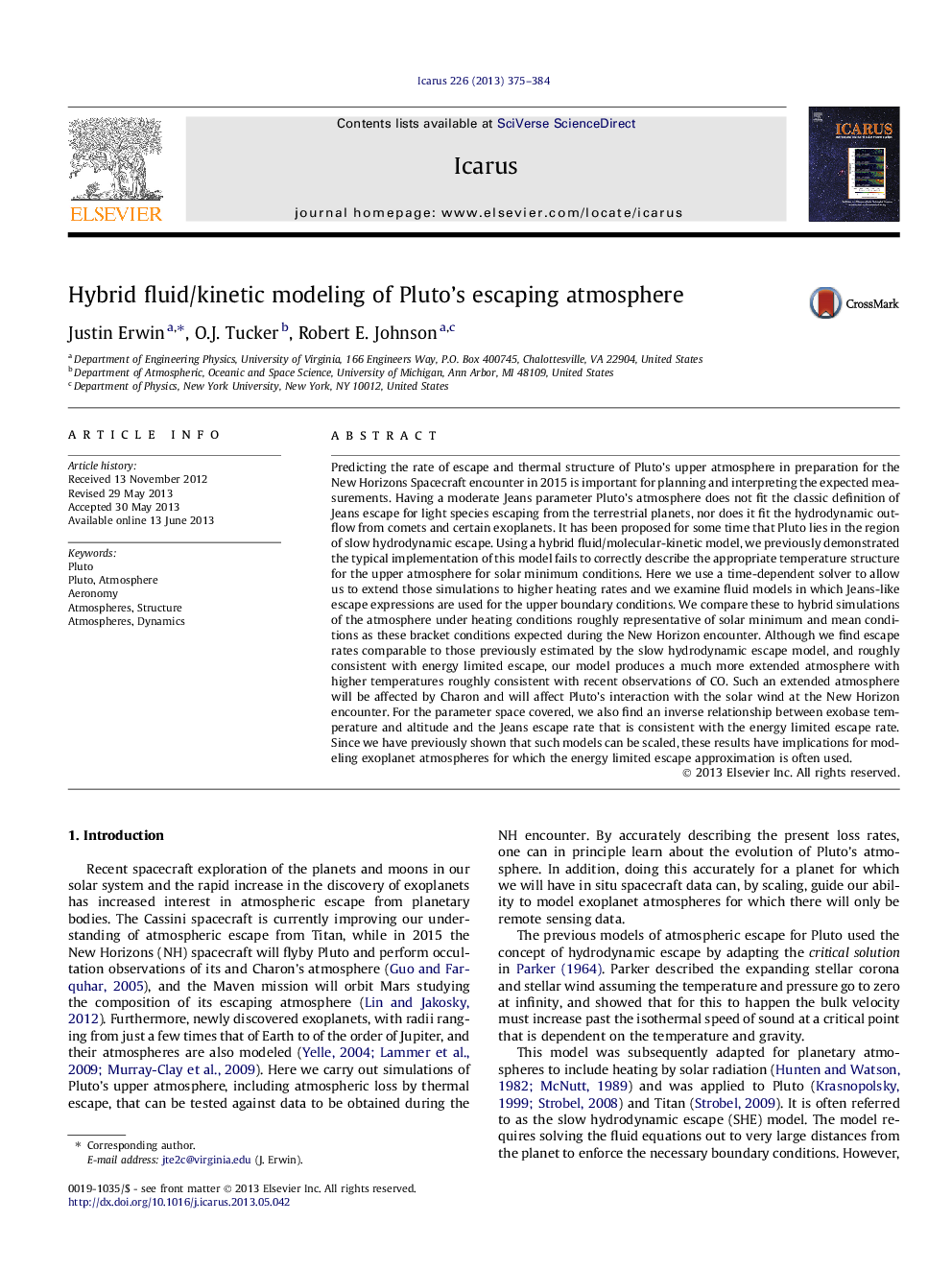| Article ID | Journal | Published Year | Pages | File Type |
|---|---|---|---|---|
| 10701310 | Icarus | 2013 | 10 Pages |
Abstract
Predicting the rate of escape and thermal structure of Pluto's upper atmosphere in preparation for the New Horizons Spacecraft encounter in 2015 is important for planning and interpreting the expected measurements. Having a moderate Jeans parameter Pluto's atmosphere does not fit the classic definition of Jeans escape for light species escaping from the terrestrial planets, nor does it fit the hydrodynamic outflow from comets and certain exoplanets. It has been proposed for some time that Pluto lies in the region of slow hydrodynamic escape. Using a hybrid fluid/molecular-kinetic model, we previously demonstrated the typical implementation of this model fails to correctly describe the appropriate temperature structure for the upper atmosphere for solar minimum conditions. Here we use a time-dependent solver to allow us to extend those simulations to higher heating rates and we examine fluid models in which Jeans-like escape expressions are used for the upper boundary conditions. We compare these to hybrid simulations of the atmosphere under heating conditions roughly representative of solar minimum and mean conditions as these bracket conditions expected during the New Horizon encounter. Although we find escape rates comparable to those previously estimated by the slow hydrodynamic escape model, and roughly consistent with energy limited escape, our model produces a much more extended atmosphere with higher temperatures roughly consistent with recent observations of CO. Such an extended atmosphere will be affected by Charon and will affect Pluto's interaction with the solar wind at the New Horizon encounter. For the parameter space covered, we also find an inverse relationship between exobase temperature and altitude and the Jeans escape rate that is consistent with the energy limited escape rate. Since we have previously shown that such models can be scaled, these results have implications for modeling exoplanet atmospheres for which the energy limited escape approximation is often used.
Related Topics
Physical Sciences and Engineering
Earth and Planetary Sciences
Space and Planetary Science
Authors
Justin Erwin, O.J. Tucker, Robert E. Johnson,
